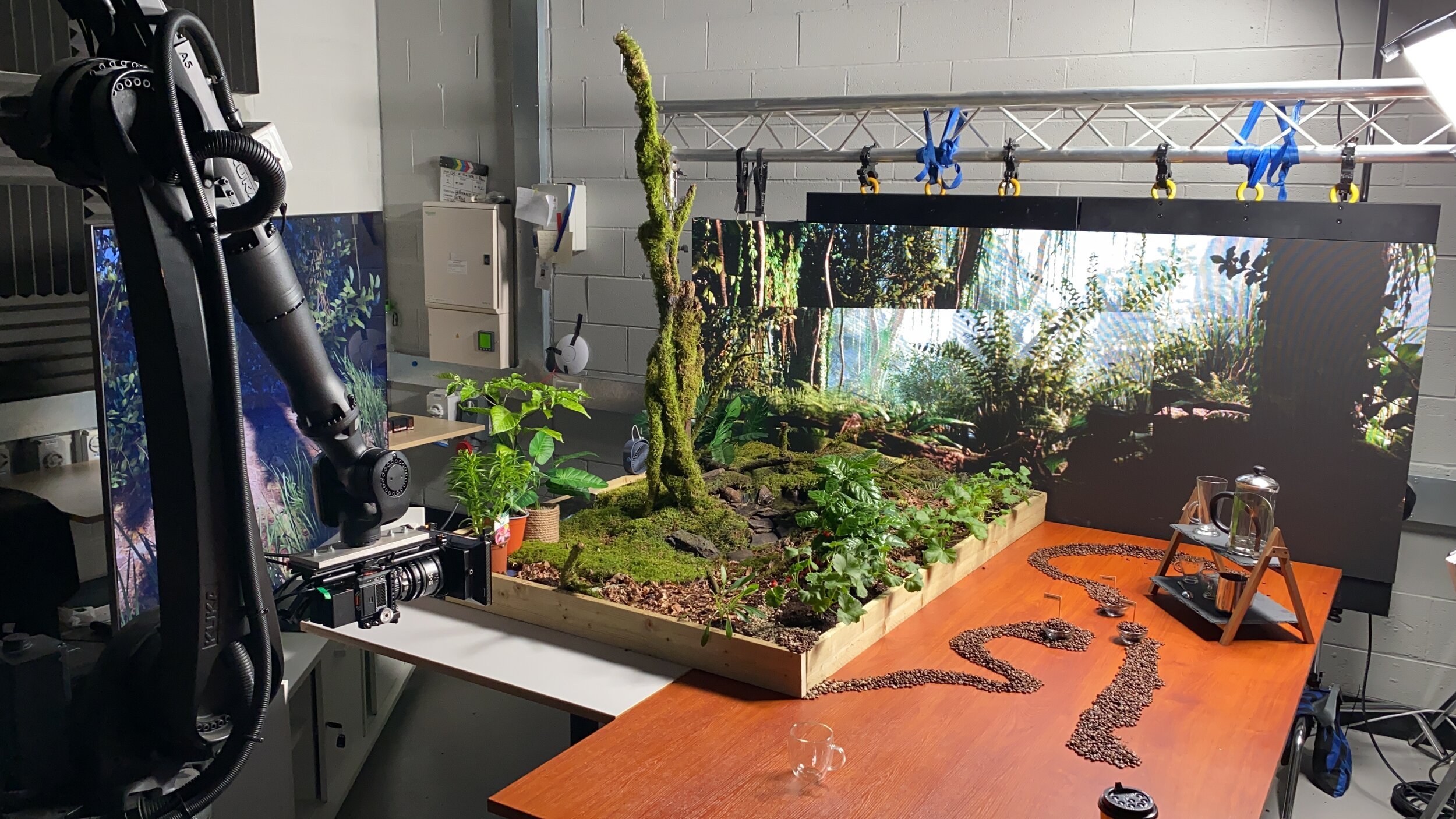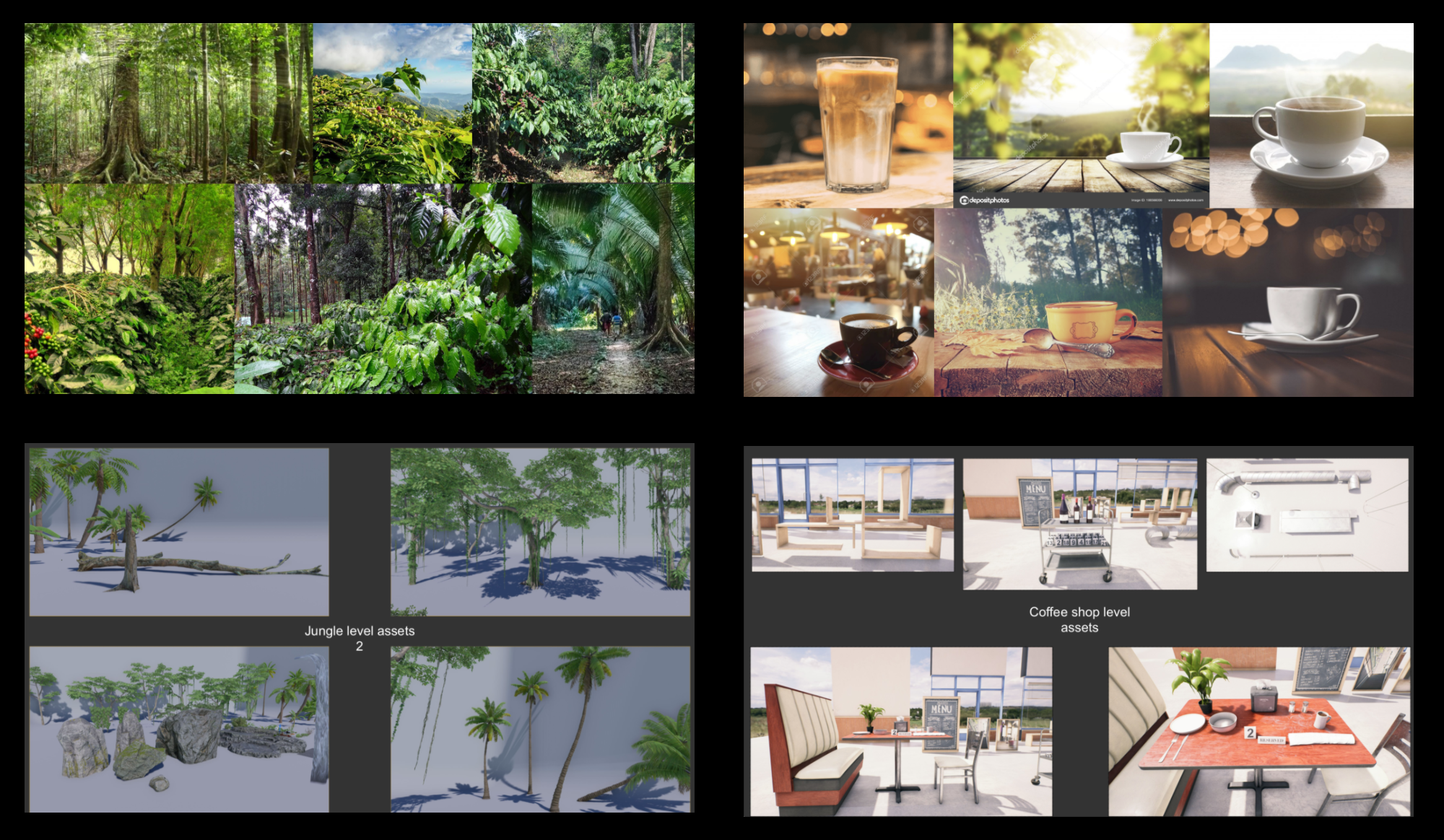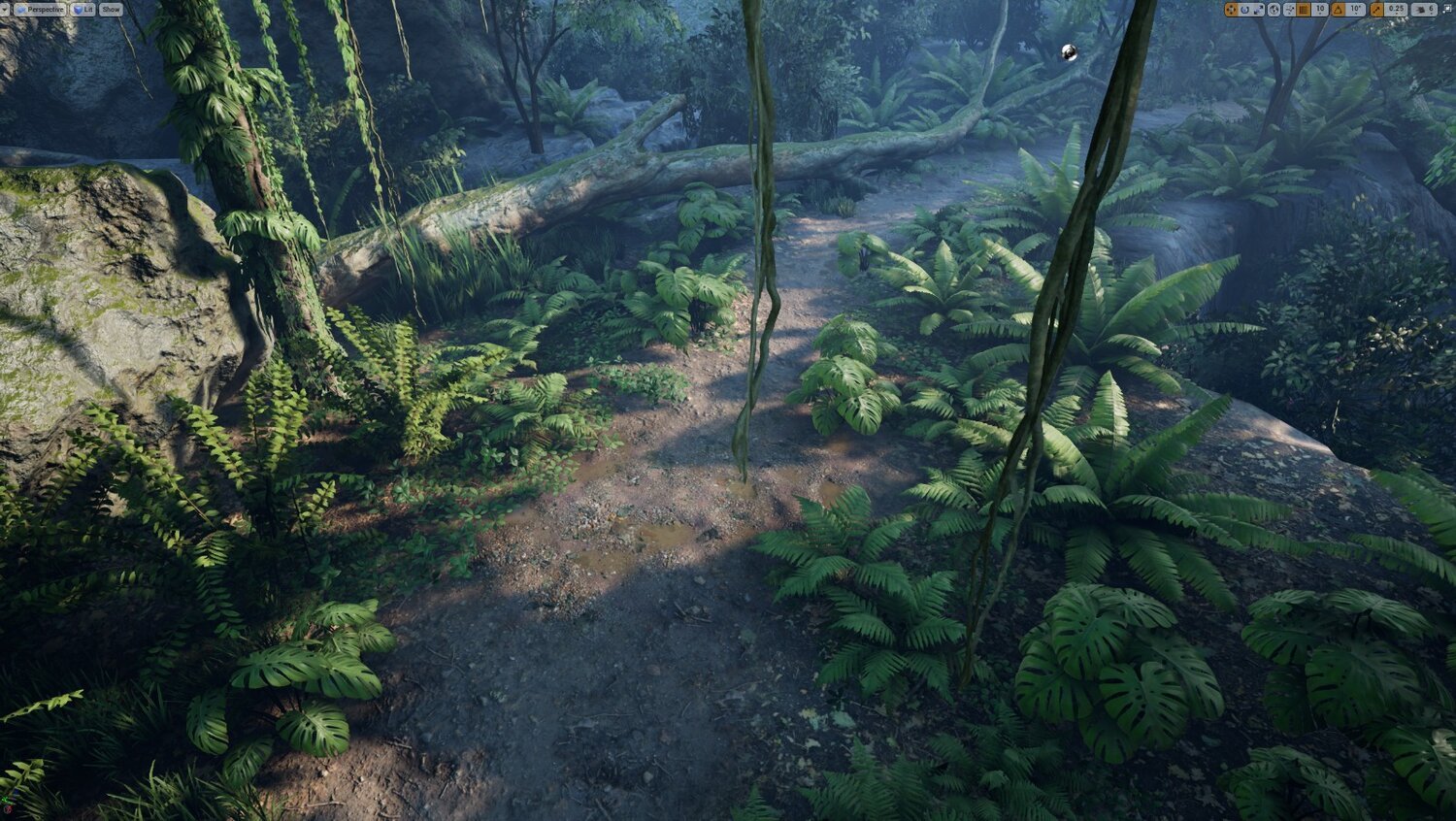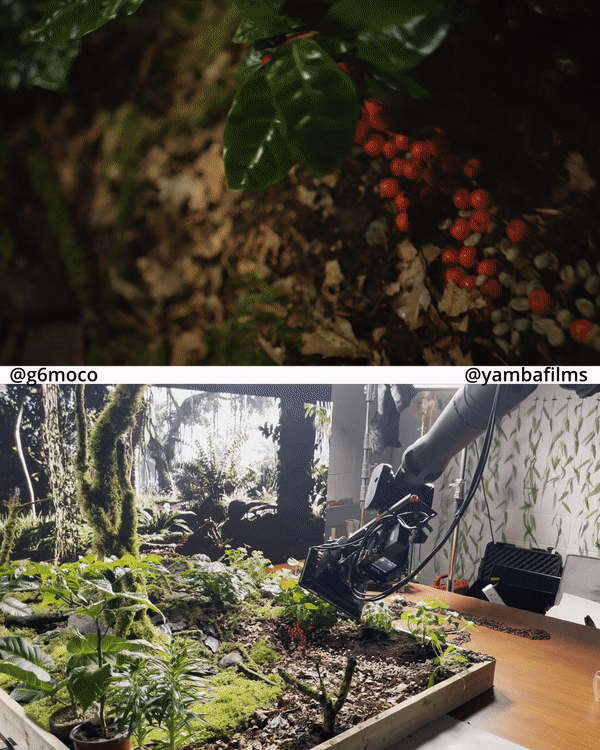
Virtual Production - Behind The Scenes
Concept
We wanted to create a coffee advert for Carringtons Coffee Co. that makes you think that you’re in a tropical jungle, then takes you through the wilderness on a search for a coffee plant and its coffee beans, finally revealing that we’re actually in a coffee shop in the UK - all filmed on a tiny set in our studio.
Using virtual production with Unreal Engine on our LED Wall and shot with our robotic arm, we were able to achieve the transition between worlds by using repeatable camera moves and changing the background in Unreal.
The film showcases other benefits of working with virtual production such as lighting, reflections and refractions. Read on to find out more!
Refractions are just one of the advantages of virtual production for little no post-production, compared to using a green screen
Director’s Treatment
We knew from the start we wanted to work with virtual production to achieve our vision. We had the idea from the Director’s treatment of the two locations in the tropical forest and modern coffee shop.
From these moodboards we then researched suitable environments available in the Unreal marketplace. Once we’d found these as a canvas on which to build our virtual set, we were able to move things like trees and bring in other elements. We purchased other assets such as textures, surfaces, stones and tree trunks to start designing the set as we wanted.
Pre-viz
A pre-viz was made as a proof of concept. This helped us visualise the overall shot with the transition between Unreal environments, as well as gauging the movement of the robotic camera arm. The pre-viz was built to scale as a digital replica of our proposed set, which gave us precise dimensions and direction for building the physical set.
Virtual Scouting
Before the physical set was created, we stepped into the Unreal world for virtual scouting using a VR headset.
Whilst doing this, the team can see the scouting on a screen and the Director can set markers, draw virtual notes/sketches and ask for adjustments to the environment in real-time.
First was the walk through of the jungle to find our location. Then we framed the shot up and adjusted that location’s assets and added objects such as a mountain in the background, swapped out trees and added foliage. Then we adjusted the sun’s location and direction as well as the temperature of the light to get a warm morning feeling.
Set Build
Now we have the framing and all of the props in the Unreal environment. In this instance we’re filming with natural light and the Director could decide on the temperature of the sunlight, as well as the direction of the sunlight which then had to be replicated in the physical world using physical lights and light from the LED wall.
At this stage we are modifying the physical world to the virtual world and vice versa as everything is adjustable. In fact, the coffee shop environment was based on the physical set design. We were able to adjust and match things like the colour of the tables, wooden planters and types of plants within the Unreal environment.
Shoot Day
Compared to traditional filmmaking, virtual production is a very iterative process. Creative decisions are made earlier on in the process, rather than left to the edit where some things may not be possible. Even on the shoot day, it is possible to tweak elements in the background in the Unreal environment, such as moving a tree, or adjusting the wind of the plants to match the movement of the plants on set with the fan.
Normally there’s a 7-12 frame delay with this technology when the camera moves within the Unreal Games environment on the video wall. We have reversed the delay in our motion control programming path so we now have a 0-frame delay. This is a game changer as we can move the robot at any speed without waiting for the frustum to reach the camera field of view. Secondly, a smaller frustum means the rest of the LED wall provides the light source as intended. All of this allows for more creative control on set.
Post-Production
A huge advantage of virtual production over using a green/blue screen is it removes heavy editing/VFX work in post. This not only saves time but mitigates any creative compromises where the editor has to fill in gaps. Most importantly, real-time light reflections.
Going into post-production, the client and director already have an exact idea of the end visual as we’re working closer to the final pixel. After the shoot the only thing left to do is make selects based on the performance and action because all the takes have exactly the same camera moves. For this film we stitched together the jungle and coffee shots for one seamless take. The rest of the editing was mostly tweaks for things like the colour grade, speed ramps, sound, and copy/end titles.
Ready for Virtual Production?
Virtual production is a fascinating way to make films; it creates a greater intimacy between subject, crew and environment, bridging the gap between real and unreal; naturally making the film more authentic and genuine.
At G6 MoCo, we understand the idiosyncrasies of working with virtual production and motion control. We thrive working with cutting edge technology and creating innovative solutions. We have defined our own virtual production approach and gathered key knowledge to leverage efficiencies for our clients.
Whether you’re looking for an accessible tabletop solution for virtual production like this coffee shoot, or you’d like to use our advanced robotic arm on a larger LED volume stage, we’d love to chat about the creative possibilities with this exciting technology. Please get in touch and say hello@g6moco.com










